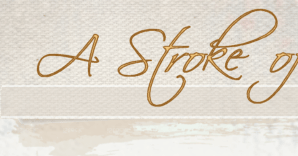Well, Chris and Michael, I may have been somewhat harsh in my post. But Michael, you say
Quote:
|
It is important to be able to look at your photos and recognize the flaws and work them out.
|
I have to ask if you don't spend time drawing from life, as well as take the time to learn anatomy, how would you recognize the flaws? That was the point that I wanted to make.
Chris, I did not mean that all those posting are just copying photos but some sure seem like they are to me. I did not mean to say that we should not use photos but just that it should be looked at as just one step after planning out a composition. I have used photos, and do all the time, to capture reference to work from when my model is not there, or to capture a detail on location that I want to work on later in the studio. Photos are great for this. This is just my opinion that it is much better to learn to paint from life first, then use photos later as a tool to help.
Once you learn to paint from life, then you can look at a photo and see the flaws and not copy them. There is no substitute for painting from life, and I see too many paintings being posted that are obviously from those still learning to paint, who are painting from a photo and using that photo as their layout for composition, reference for color and lighting. I strongly advise that those wanting to learn to draw and paint figures and portraits start painting from life first. Or at least spend some time drawing from life. I know that not everyone lives where a model session is available. Check around - you might be surprised to find that there are open life drawing sessions available in your area. If there are any colleges in your area, check with them first. There might be a independent art school. Also, check with the local art community to see if you might organize one. You might be surprised that there are others in your area that would love to join you and will help cover that cost of the model.
Yes, getting a likeness is very important in portrait work but learning to draw and paint first will make getting that likeness much easier. I guess the advice that I wanted to give had less to do with using photos and more to do with painting and its goal. And the best quote I have ever read was in the forewword of Everett R. Kinstler's book. It was:
Quote:
|
You say you are studying to become a portrait painter and I think you'd be making a great mistake if you kept that only in view during the time you intend to work in life class, for the object of the student should be to acquire sufficient command over his materials and do whatever nature presents him. The conventionalities of portrait painting are only tolerable in one who is a good painter. If he is only a good portrait painter he is nobody. Try to become a painter first and then apply your knowledge to a special branch. But do not begin by learning what is required for a special branch or you will become a mannerist." John Singer Sargent, Letter to an art student. 1901
|
Although you may still choose to paint portraits after reading this, I feel this advice is even more relevant in 2002 than it was in 1901. Today we have digital art, in which I can take a photo, edit it in Photoshop or Painter and then print it onto canvas - maybe add a few dabs of paint and call that a painting. And you can't get any closer to a photo than that. So if all you are doing is copying a photo, wow, I've got you beat before you start. But if you can paint and apply all that you know about painting composition and your skill with your medium, then, wow, no matter how good I am with camera and digital paint, I can't come close to what you can do. That is the goal. Learn to paint from life, then apply that to painting portraits.

